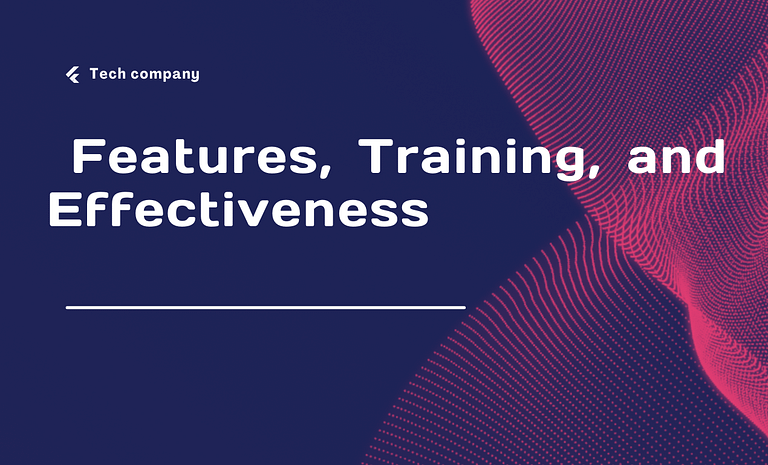GPT-4o Described: Features, Training, and Effectiveness

The field of artificial intelligence has seen rapid advancements in recent years, with OpenAI at the forefront of this revolution. Their latest model, GPT-4o, represents a significant leap forward in natural language processing (NLP). In this blog, we will explore the key features of GPT-4o, delve into its training methodologies, and evaluate its effectiveness in various applications.
Key Features of GPT-4o
1. Enhanced Language Understanding:
GPT-4o boasts an improved ability to understand and generate human-like text. Its enhanced language model can comprehend context, nuances, and subtleties in a way that previous iterations could not. This makes interactions with GPT-4o more coherent and contextually relevant.
2. Multilingual Proficiency:
Unlike its predecessors, GPT-4o is designed to handle multiple languages with greater proficiency. It can seamlessly switch between languages within the same conversation, making it a powerful tool for global applications.
3. Advanced Reasoning Capabilities:
GPT-4o exhibits improved logical reasoning and problem-solving skills. It can analyze complex queries, provide detailed explanations, and even engage in multi-step reasoning tasks. This advancement makes it suitable for applications requiring critical thinking and decision-making.
4. Customization and Fine-Tuning:
One of the standout features of GPT-4o is its ability to be fine-tuned for specific applications. Users can customize the model to align with particular industry requirements or business needs, enhancing its utility across diverse fields.
5. Contextual Awareness:
GPT-4o maintains context over longer conversations more effectively. This means it can remember previous interactions within a session, providing a more fluid and human-like conversational experience.
6. Improved Ethical Considerations:
OpenAI has implemented more robust safety measures and ethical guidelines in GPT-4o. The model is designed to minimize harmful outputs, bias, and misuse, ensuring a more responsible deployment in various applications.
Training Methodologies
The development of GPT-4o involved several innovative training methodologies to enhance its capabilities:
1. Large-Scale Data Utilization:
GPT-4o was trained on a diverse and extensive dataset, encompassing a wide range of topics, languages, and styles. This comprehensive training corpus enables the model to generate high-quality responses across different contexts.
2. Transfer Learning:
Leveraging transfer learning techniques, GPT-4o builds on the knowledge acquired from earlier versions. This approach allows the model to retain useful information from previous iterations while incorporating new data and insights.
3. Reinforcement Learning from Human Feedback (RLHF):
OpenAI utilized reinforcement learning from human feedback to refine GPT-4o’s outputs. By incorporating human evaluators’ feedback, the model can adjust its responses to be more accurate, relevant, and contextually appropriate.
4. Iterative Training Cycles:
GPT-4o underwent multiple training cycles, each iteration improving upon the last. These iterative cycles helped fine-tune the model’s performance, addressing weaknesses and enhancing strengths over time.
5. Ethical and Bias Mitigation Training:
Significant effort was dedicated to training GPT-4o on ethical considerations and bias mitigation. The model was exposed to scenarios designed to identify and correct biases, ensuring more balanced and fair responses.
Effectiveness in Various Applications
1. Customer Support:
GPT-4o’s advanced language understanding and contextual awareness make it an ideal candidate for customer support applications. It can handle complex queries, provide detailed answers, and maintain coherent conversations, significantly enhancing customer satisfaction.
2. Content Creation:
In the realm of content creation, GPT-4o shines with its ability to generate high-quality text. It can assist writers in drafting articles, creating marketing copy, and even producing creative content like stories and poems.
3. Language Translation:
GPT-4o’s multilingual proficiency makes it a powerful tool for language translation. It can accurately translate text between multiple languages, maintaining context and nuances, which is crucial for effective communication.
4. Education and Training:
The model’s advanced reasoning capabilities allow it to serve as an educational tool, providing explanations, tutoring students, and even generating educational content. Its ability to engage in multi-step reasoning makes it particularly useful for complex subjects.
5. Research Assistance:
Researchers can leverage GPT-4o to sift through vast amounts of data, summarize information, and generate reports. The model’s capacity to understand and generate detailed explanations aids in literature reviews and hypothesis generation.
6. Personalized Recommendations:
Businesses can use GPT-4o to enhance their recommendation systems. By understanding user preferences and context, the model can provide personalized suggestions, improving user engagement and satisfaction.
Table of Contents
Conclusion
GPT-4o represents a significant advancement in natural language processing, offering enhanced language understanding, multilingual proficiency, and advanced reasoning capabilities. Its training methodologies, including large-scale data utilization, reinforcement learning from human feedback, and iterative training cycles, have resulted in a robust and versatile model. With applications ranging from customer support and content creation to language translation and education, GPT-4o is set to revolutionize how we interact with AI. Its improved ethical considerations ensure responsible use, making it a valuable tool across various industries. As we continue to explore the potential of GPT-4o, its impact on our daily lives and professional environments is bound to grow, ushering in a new era of intelligent, interactive, and effective AI solutions.
